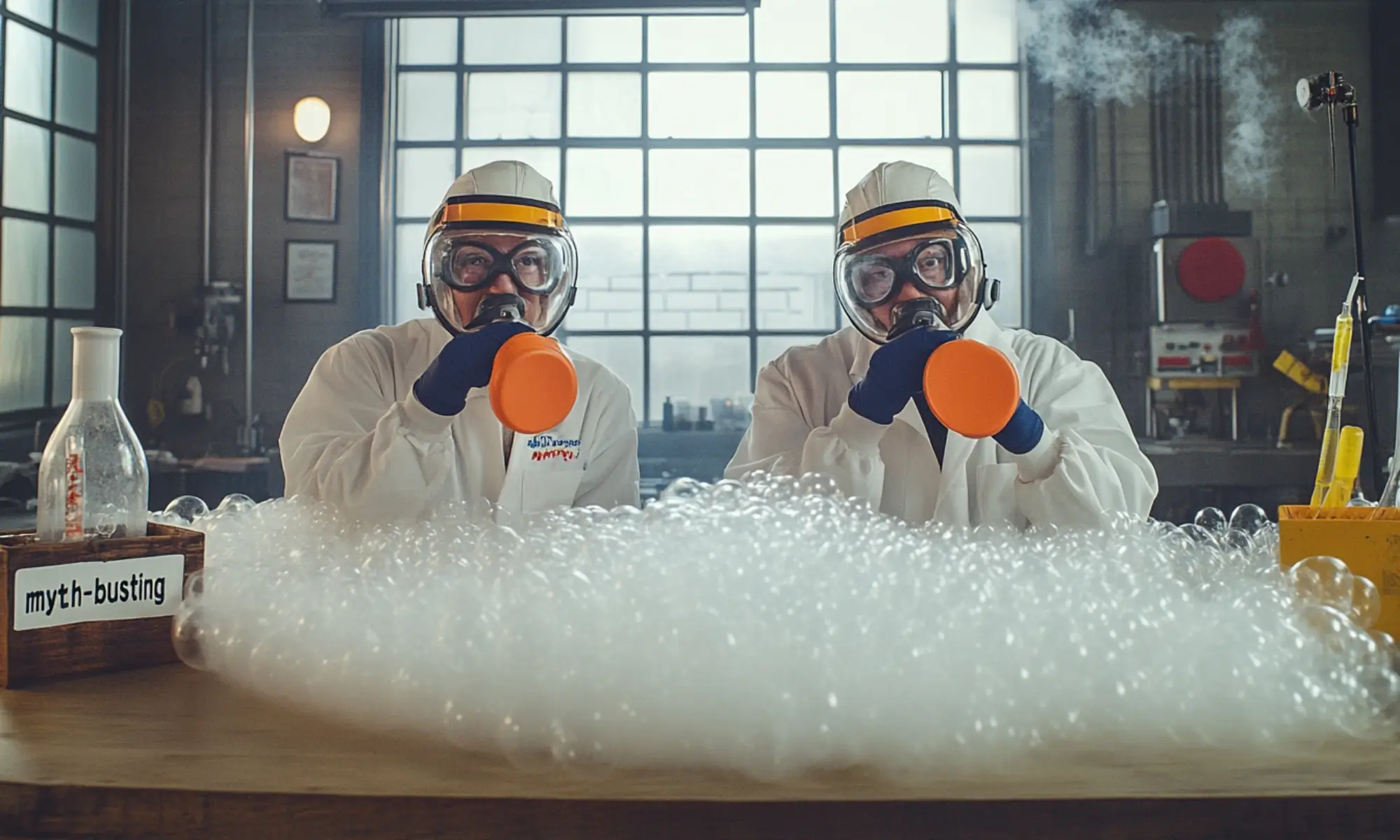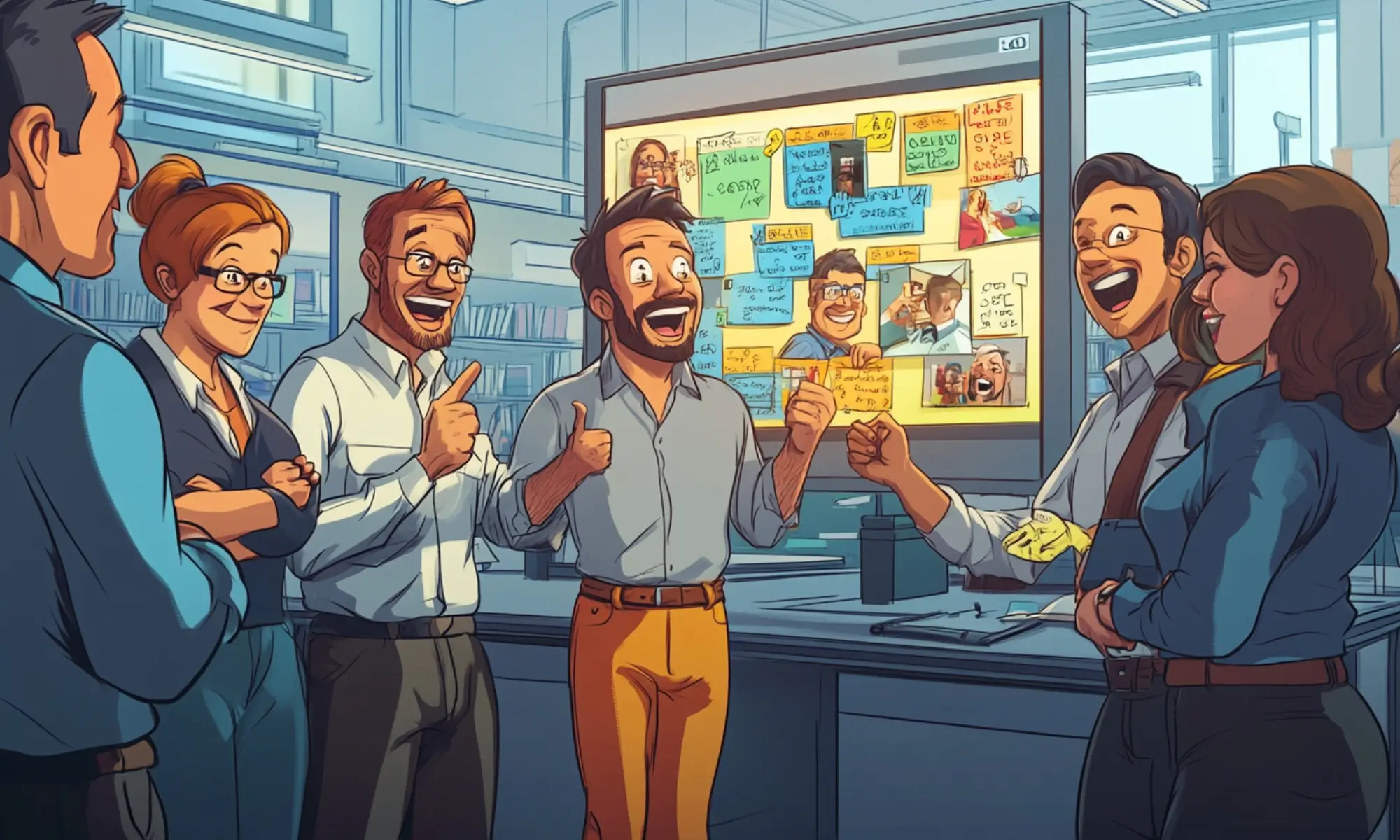Creating a safe work environment is essential, but traditional safety meetings can often feel monotonous and uninspiring. Injecting humor into safety discussions lightens the mood and helps employees engage more deeply and remember the lessons.
By incorporating funny safety topics, organizations can make safety training enjoyable, relatable, and memorable, encouraging employees to retain crucial information and apply it in their daily tasks. Here, we explore 12 funny safety topics that combine laughter with learning, turning routine safety meetings into engaging and effective experiences.

Why Humor Works in Safety Training
Humor is an effective tool in safety training because it engages employees, breaks down resistance, and makes learning more memorable. Here’s why humor works:
- Increases Engagement: Safety training can often be seen as repetitive or dull, causing employees to tune out. By integrating humor, sessions become more interesting, capturing and holding participants’ attention throughout the training. Engaged employees are more likely to absorb and retain important information.
- Reduces Stress and Builds Comfort: Safety discussions can sometimes feel serious or intimidating, especially when addressing potential hazards and accidents. Humor lightens the mood, reducing anxiety and creating a comfortable atmosphere where employees are open to learning and participating.
- Enhances Memory Retention: Studies show that people remember information better when it is associated with positive emotions. Humor triggers emotional responses that help reinforce learning, making it easier for employees to recall safety procedures when needed.
- Fosters Connection and Teamwork: Laughter is a social bonding tool. When employees share a laugh during training, it fosters camaraderie and teamwork. This shared experience promotes a collaborative culture where employees feel comfortable discussing safety concerns and helping each other adhere to safety practices.
- Encourages a Positive Attitude Towards Safety: Safety can be perceived as a tedious requirement, but incorporating humor shifts that perspective. When training is enjoyable, employees develop a more positive attitude toward safety protocols, making them more willing to engage in and support workplace safety initiatives.
By blending humor with learning, safety training transforms from a mandatory session into an experience that employees look forward to, ensuring they consistently internalize and apply safety practices.

Funny Safety Topics: Laugh Your Way to a Safer Workplace
Keeping safety at the forefront of the workplace can be challenging, especially when discussions become repetitive. However, by incorporating humor into safety topics, employees can become more engaged and better retain the information.
Here are 12 funny safety topics that can turn a mundane safety meeting into an enjoyable, memorable experience. This lighthearted approach will make your workplace safer, strengthen team spirit, and foster a culture of safety mindfulness.
1. The Great Office Chair Race: Ergonomics with a Twist
Turning an office chair race into a lesson on ergonomics can inject fun into the workplace while conveying an important safety message. This activity illustrates the significance of proper posture and ergonomic seating, demonstrating how easy it is to overlook these daily safety practices. Employees participate, laugh, and remember to sit and move to avoid strain or injury. Participating in the race humorously highlights the risks of improper seating. This helps reinforce why proper ergonomic practices matter in daily office life.
Key Points:
- Organize a lighthearted race using office chairs.
- Demonstrate safe versus unsafe chair use.
- Reinforce correct sitting posture and ergonomics.
- Highlight potential injuries from improper use.
- Engage employees in memorable safety lessons.
2. The Adventures of Clumsy Carl: Slips, Trips, and Falls
Create “Clumsy Carl,” a character who embodies common workplace mishaps involving slips, trips, and falls. His funny anecdotes can make safety talks relatable while illustrating how these accidents can happen to anyone if precautions aren’t taken. This storytelling approach effectively teaches employees to be mindful of their surroundings. Carl’s stories remind of maintaining a tidy workspace to prevent hazards. Humor makes safety lessons engaging and relatable.
Key Points:
- Introduce “Clumsy Carl” as a relatable character.
- Use stories to highlight common workplace hazards.
- Teach the importance of a clean, hazard-free environment.
- Make safety lessons fun and engaging.
- Reinforce preventive measures against slips and trips.
3. PPE Fashion Show: Dressing for Safety (and a Laugh)
A PPE fashion show mixes humor with learning by showcasing how to correctly and incorrectly wear protective gear. Employees can model outfits to demonstrate best practices, while exaggerated mistakes draw laughter and attention to common PPE errors. This visual and interactive approach helps make safety procedures memorable. It emphasizes the importance of wearing PPE properly. The event leaves a lasting impression about workplace safety.
Key Points:
- Host a fashion show to demonstrate PPE use.
- Show correct and incorrect ways to wear gear.
- Use humor to highlight common PPE mistakes.
- Make learning about PPE fun and interactive.
- Reinforce proper PPE practices.

4. Safety Slogans Gone Wrong: Communicating Effectively
Presenting poorly worded or amusing safety slogans highlights the importance of clear, effective communication. A humorous look at ambiguous slogans can show how misinterpretations might lead to safety issues. Employees can discuss how to improve these messages for clarity. This emphasizes why straightforward, effective communication is crucial in safety protocols. Employees gain insight into what makes a good safety message.
Key Points:
- Present funny or unclear safety slogans.
- Highlight how miscommunication can lead to accidents.
- Emphasize the importance of clear, effective messages.
- Encourage employees to discuss and improve safety communication.
- Make the topic of communication engaging and memorable.
5. The Toolbox Talk Show: Turning Safety into Entertainment
Transform the traditional safety meeting into an engaging talk show, complete with a host and guest appearances by staff. This format encourages participation and makes safety discussions lively and interactive. Employees can role-play or share funny safety-related stories, boosting their interest in safety topics. The show-like atmosphere ensures that key safety messages are retained. It’s an effective way to break the monotony of routine meetings.
Key Points:
- Turn safety meetings into a talk show format.
- Include a host and guest appearances for interaction.
- Encourage sharing safety-related stories.
- Make discussions engaging and lively.
- Ensure key safety points are memorable.
6. Hazard Hunt: A Workplace Scavenger Hunt
Organize a scavenger hunt with safety hazards intentionally planted throughout the workplace. Teams can compete to identify potential risks, turning hazard recognition into an engaging game. This activity sharpens employees’ ability to spot and mitigate risks proactively. The interactive format promotes teamwork and awareness. It’s a fun yet effective way to enhance hazard recognition skills.
Key Points:
- Create a scavenger hunt with planted hazards.
- Promote team-based hazard identification.
- Turn hazard recognition into a competitive game.
- Boost proactive risk awareness.
- Reinforce safety in a fun way.

7. Safety MythBusters: Debunking Common Misconceptions
Address common safety myths with humor, presenting them before busting them with factual information. This approach clarifies widespread misconceptions and underscores the importance of accurate safety knowledge. By framing myths humorously, employees are more engaged in learning. It encourages them to think critically about what they know. This helps cement correct practices in their daily tasks.
Key Points:
- Present common safety myths humorously.
- Debunk myths with factual safety information.
- Engage employees in learning through humor.
- Encourage critical thinking about safety knowledge.
- Reinforce accurate, practical safety practices.
8. The Safety Dance: Learning Through Movement
Create a simple dance routine incorporating key safety procedures, such as proper lifting techniques or evacuation steps. This kinesthetic learning activity aids memory retention and breaks the routine of traditional safety training. Employees learn through movement, making it both fun and educational. The dance acts as a physical reminder of safety steps and brings energy to safety training sessions.
Key Points:
- Create a dance routine with safety procedures.
- Reinforce learning through movement.
- Make training fun and interactive.
- Help employees remember safety steps better.
- Energize and break the routine of safety training.
9. Caption This: Interpreting Safety Images
Show funny or thought-provoking safety-related images and ask employees to create captions. This activity engages employees creatively while emphasizing safety concepts. It sparks discussions on what’s happening in each image and why safety protocols are essential. This method adds humor while enhancing safety awareness. Employees will remember the discussions linked to the images.
Key Points:
- Use funny safety images for a caption contest.
- Engage employees creatively.
- Reinforce safety concepts through discussions.
- Encourage fun and participation.
- Make safety memorable through visual aids.
10. Safety Jeopardy: Testing Knowledge with a Twist
Host a “Safety Jeopardy” game with safety-related questions, creating a competitive and fun way to test employees’ knowledge. Teams compete for points while reinforcing critical safety information. This interactive approach fosters team spirit and active participation. The game format makes learning enjoyable and less formal, motivating employees to brush up on their safety knowledge.
Key Points:
- Organize a “Safety Jeopardy” game.
- Test employees’ safety knowledge competitively.
- Make learning interactive and fun.
- Reinforce critical safety information.
- Encourage team spirit and participation.

11. The Blame Game: Understanding Accountability
Present exaggerated, humorous scenarios where employees blame inanimate objects for their accidents, such as “The chair tripped me!” Use this as a launching point to discuss personal accountability in the workplace. This shows how deflecting blame can prevent real problem-solving. Employees learn the importance of taking responsibility for their actions. It’s a fun way to stress personal involvement in safety.
Key Points:
- Use funny scenarios of blaming objects.
- Emphasize personal accountability.
- Discuss how deflecting blame hampers safety.
- Encourage problem-solving and responsibility.
- Reinforce safety through humor.
12. Safety Meme Monday: Sharing Laughter and Lessons
Encourage employees to create and share safety-related memes. This modern approach uses humor to spotlight safety issues and keeps safety awareness fresh. Memes provide a platform for continuous learning and foster a collaborative atmosphere. Employees stay engaged as they look forward to new content each week. It’s a fun way to keep safety in your mind.
Key Points:
- Encourage employees to make safety memes.
- Use humor to highlight safety issues.
- Foster a collaborative safety culture.
- Keep safety awareness ongoing.
- Make learning and sharing fun.
By incorporating these funny safety topics into your workplace, you can create an engaging environment where safety education becomes an enjoyable, impactful experience. Employees will appreciate the unique approach, leading to higher retention of safety protocols and a more vibrant, safety-conscious workplace.
Conclusion
Incorporating humor into workplace safety training is a powerful way to make safety a natural part of the work culture. By blending laughter with essential lessons, employees become more engaged and better equipped to remember and follow safety protocols. These funny safety topics make training sessions enjoyable and foster a supportive environment where safety is taken seriously without being dull.
When employees leave with a smile and newfound knowledge, the workplace becomes both safer and more connected. Remember, a little humor can go a long way in creating a culture of safety and awareness that benefits everyone.

